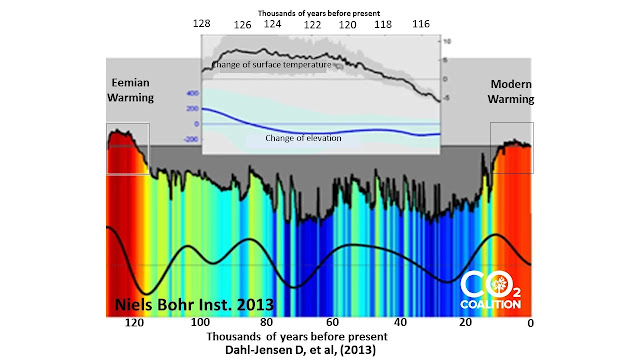Responding to the CO2 Coalition's "Fact #15" on Eemian Warmth

CO2 Coalition 's " Fact #15 " wants us to believe that temperatures even 8°C warmer than today would be just fine for humanity. In order to make that claim, they need to perform a few tricks. The first trick is to make that 8°C Greenland temperatures instead of global temperatures. The second trick is to redefine "today" as "the mean of the past millennium." Here's how they say it The results revealed that the Eemian interglacial warm period, between 130,000 and 115,000 years ago, was much warmer than previously thought. In fact, it was, 8°C (14.4°F) warmer than today. Their source for this is Dahl-Jensen 2013[1], which details the results of the new North Greenland Eemian (NEEM) Ice Drilling ice core. The paper concludes: NEEM surface temperatures after the onset of the Eemian (126,000 years ago) peaked at 8 ± 4 degrees Celsius above the mean of the past millennium, followed by a gradual cooling that was probably driven by the decreasing summer i...

